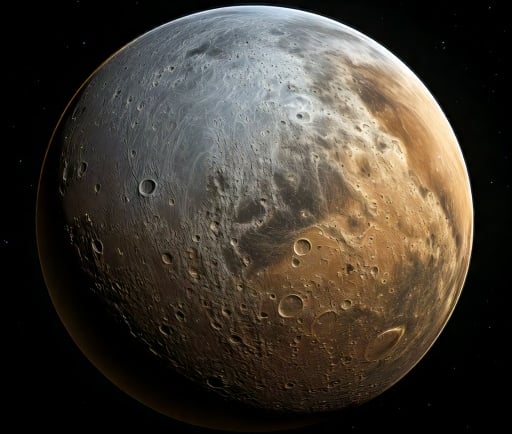Triton: Neptune's Largest Satellite


Introduction to Triton
Triton is the largest satellite of the planet Neptune, standing out as an intriguing celestial body in our solar system. With a diameter of about 2,700 kilometers, it is not just notable for its size; it is also the only moon of Neptune that is sufficiently massive to be rounded by its own gravity. This unique feature categorizes Triton as a large moon, setting it apart from many of the smaller, irregularly shaped moons found in the outer solar system.
The Atmosphere of Triton
What makes Triton particularly fascinating is its thin, hazy atmosphere. Composed primarily of nitrogen, with traces of methane, this atmosphere is one of the coldest in the solar system. The presence of such an atmosphere is quite remarkable, given Triton's distance from the sun. This thin atmosphere is a result of the moon’s surface temperature plummeting to around -235 degrees Celsius. The hazy appearance is due to the presence of small particles within the atmosphere, which scatter light and create a dense, fog-like effect.
Triton's Unique Features
One of Triton’s most distinctive features is its retrograde orbit, which means it orbits Neptune in the opposite direction of the planet's spin. This is a strong indication that Triton may have been captured by Neptune's gravity rather than having formed in tandem with the planet itself. The geological features of Triton are equally compelling, with large plains of frozen nitrogen and geysers that spew nitrogen gas into space. The scientific community continues to study these geysers, as they provide vital insights into Triton’s subsurface ocean and geologic activity.
Moreover, Triton’s surface is characterized by a plethora of interesting geological formations, indicating a history of tectonic and cryovolcanic activity. This lively surface serves as a point of interest for researchers seeking to understand the moon's past and its potential for harboring extraterrestrial life. Despite the extreme conditions present on Triton, the possibility of life in such a harsh environment cannot be ruled out, making it a candidate for future exploratory missions.
In conclusion, Triton is more than just Neptune's largest satellite; it represents an astonishing example of the dynamics of our solar system. With its substantial diameter, unique atmosphere, and compelling geological features, Triton continues to captivate astronomers and planetary scientists alike. Ongoing research and future space missions will undoubtedly expand our understanding of this remarkable moon and its role within the Neptune system.
